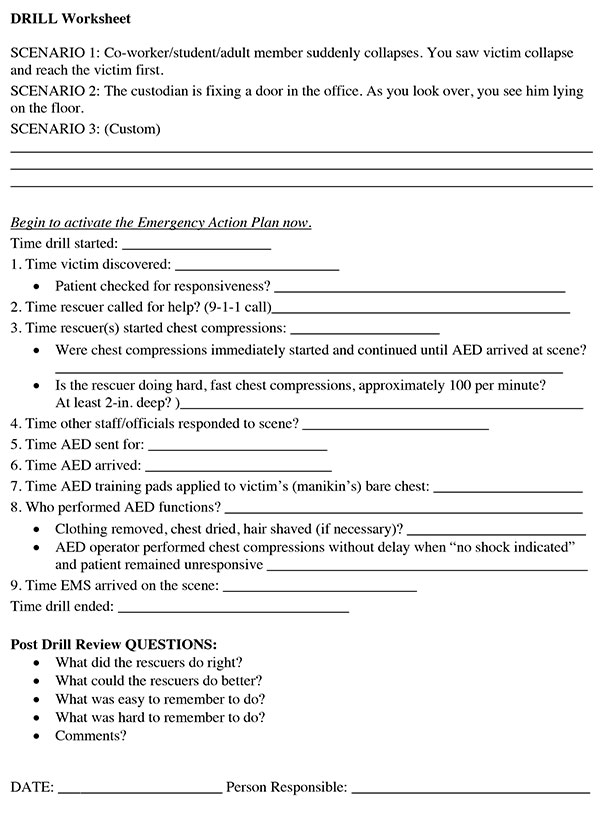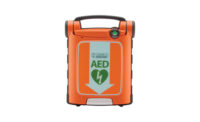Drills are an essential part of your AED program

The Sudden Cardiac Arrest Foundation says conducting a practice drill for your cardiac Emergency Action Plan (EAP) is the best way to find out if your EAP works and ensure your response team is properly prepared. Post-drill review allows you to obtain objective data, and the scenarios provide a realistic framework for your team to work from, the organization notes. On its website at www.sca-aware.org, the foundation provides examples of mock CPR-AED drills such as the one outlined in this article, to help you identify the need for:
- Additional trained personnel
- Skills refresher and/or re-education of EAP
- Additional AEDs
- Relocation of current AEDs
Planning the practice drill
When: semi-annually/annually (Select date/time/location.)
Tell your team you will be doing a drill in the next couple of weeks so they have a chance to review the EAP Protocol Worksheet ahead of time.
Who: The drill will involve your response team (non-medical personnel) to practice emergency response procedures and evaluate and improve upon those procedures as outlined in EAP.
What: Choose a scenario from the ones provided (see Drill Worksheet) or make one up that fits your setting.
Materials Required:
- Manikin (T-shirt on manikin suggested.)
- AED trainer–training pads
- Stop watch
- AED Response Kit
- Real AED in its usual location
- “AED Drill in Progress” sign (for inside AED cabinet when AED is removed)
- Drill worksheet on a clipboard (see example above)
The day of the drill
- Have the objective observer place the manikin on the floor in a visible location sometime during your practice. That person can say, “Someone has collapsed, we need help,” or just wait until someone recognizes the manikin. At this time, your EAP should go into effect.
- Once the team is gathered near the victim, the objective observer should read the scenario. Your observer will fill out the Drill Worksheet, recording the times at which each event occurs. When the real AED arrives, the observer gives them the AED trainer to use and encourages the rescuer to carry on as if this were a real arrest situation.
After the drill
Congratulate everyone and take a few minutes to go over the drill worksheet together, checking the times for each action.
- Ask everyone how they felt about the drill and discuss any concerns.
- Evaluate the drill and see if there are any action steps that need to be taken. Were there any communication problems?
- If the drill indicates any needed changes, discuss these with your response team, make the changes and communicate them clearly to your team, and then plan to have another drill that same season to test the new plan.
Looking for a reprint of this article?
From high-res PDFs to custom plaques, order your copy today!







